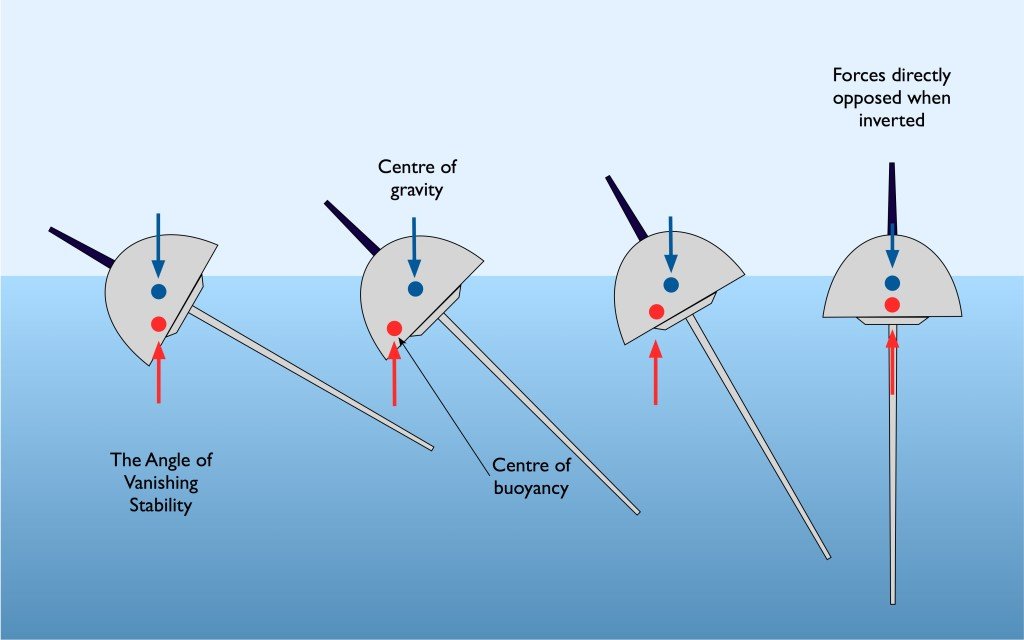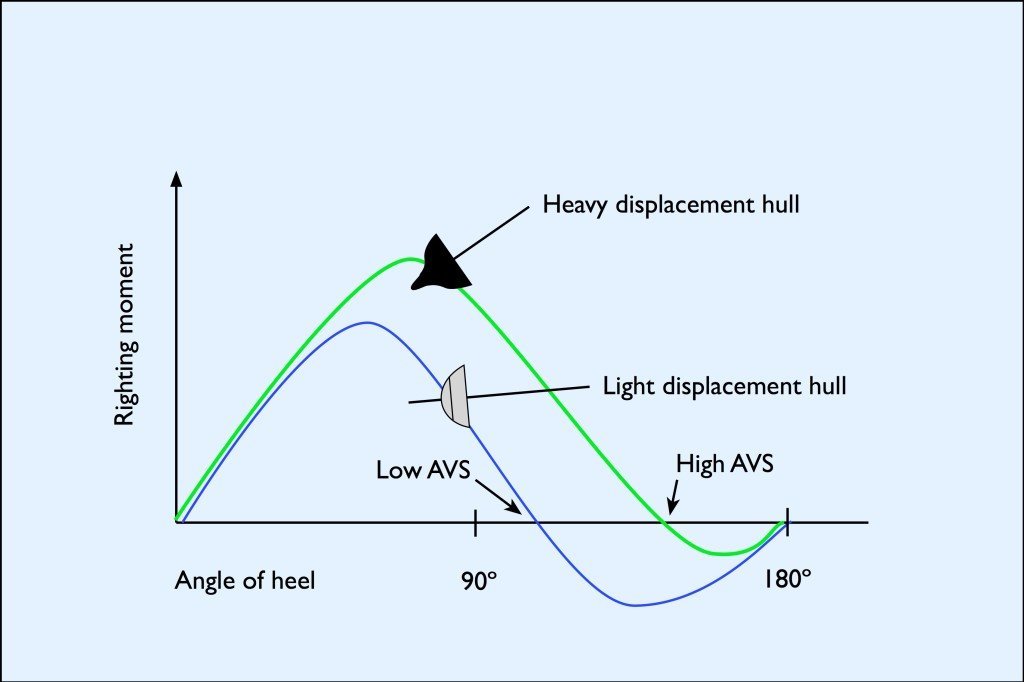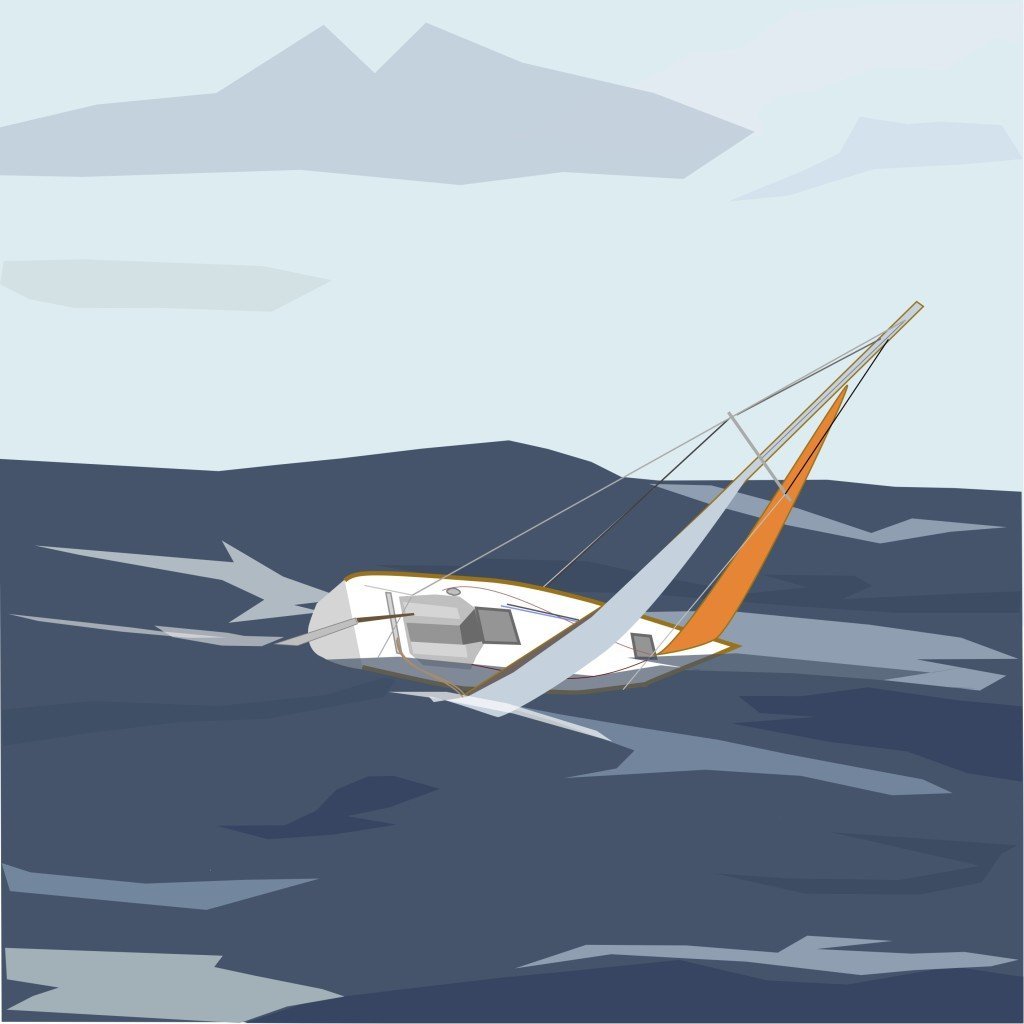Can a Capsized Ship Be Used Again
A skipper should know how their boat will cope with rough seas. By working within known limits and understanding the risks, and then the chances of a invert occurring are much reduced.
Safety is all about improving the odds. When considering the odds of a boat capsizing, knowing the limitations of its blueprint and stability are critical. In club to do this, information technology helps to understand the bones principles of how a gunkhole remains upright.
Bones principles
A boat remains upright considering of the way its weight and buoyancy interact. The bones principle of buoyancy is that the upwardly buoyant forcefulness on a body immersed in fluid is equal and opposite to the weight of the fluid that the body displaces. The weight of the fluid displaced is known every bit displacement and the displaced water has an upwardly thrust, or buoyancy, which is equal to the weight of the boat. The displaced h2o has a central point, or centre of buoyancy, which varies according to the shape of a boat'due south hull and keel.
The center of buoyancy is not to be mistaken for the centre of gravity. The weight of a gunkhole is distributed forth its length, pushing the unabridged vessel downwards. All the weight acts downward through a fundamental point, or heart of gravity, which is similar to the fulcrum or primal betoken of a seesaw. All the structure and the distribution of weight aboard contribute to a boat's centre of gravity.
To keep a boat stable in the water and prevent information technology from toppling over requires the heart of gravity to exist low, which is greatly helped past having a deep, heavy keel and an engine below the waterline.
Bending of heel

If a sailing gunkhole heels over in a strong gust of wind or is forced over past a large wave, then it will correct itself once the gust or wave has passed. When a boat is upright then the force of gravity is directly opposed to the force of buoyancy. As the boat heels over the centre of buoyancy moves outwards and acts as a lever does, pushing upwards with an increasing strength. This is fine up to a point, but eventually every bit the boat continues to heel the righting lever effect reduces and eventually is lost and and so the boat will invert and bladder upside down. This point is known equally the Angle of Vanishing Stability (AVS).

Boats with a high AVS will resist becoming inverted and return to the upright position quickly in the upshot of a knockdown. These include narrow, heavy displacement boats with a deep draft which tin heel to 120º or more. Once capsized, only a small amount of further rolling moves the hull into the positive righting expanse and the gunkhole comes back upright. Boats with wide beams and shallow drafts tend to accept loftier initial stability just may capsize at 90º of heel and volition not always exist self-righting.
Righting moment curve

Boat manufacturers publish righting moment curves of their yachts to show the stability characteristics of their designs. In Europe the Recreational Craft Directive (RCD) states that pleasure yachts between ii.5m and 24m must carry builders' plates to categorize their boats in either Category A (Sea), B (Offshore) or C (Inshore) and meet minimum standards of stability.
Breaking waves
Rules and regulations are one thing, simply the force of steep breaking waves tin knock any yacht down in coastal waters, particularly if it is caught beam-on. Research has shown that the well-nigh significant gene in capsize is whether a wave is breaking or not. If the wave is greater in height than the beam of the boat, then it can easily knock the boat over. Tests carried out at Southampton Academy in England have shown that almost any gunkhole can be capsized by a wave equal to 55% of the boat's overall length. Such waves may occur where the seabed suddenly shelves towards the coast, or where air current is blowing confronting tide.
This inquiry points to the fact that yachts seeking shelter often detect themselves in greater danger when approaching harbours than when coping with a storm farther out to bounding main.
Beingness prepared
If you are well offshore in rough weather condition, consider your options. If needs be, boost to and ride out a storm equally the boat volition be more stable and comfortable, but check you lot accept sufficient sea room to drift downwind and are not approaching a lee shore. Some other option is to prevarication ahull, with no sail upward and the helm tied to leeward. If conditions worsen then the next stage is to lie to a sea ballast or drogue, which will preclude the gunkhole from meeting waves beam on and reduce the vessel's drift charge per unit.
Don't automatically caput for the nearest harbour or your intended destination. Check first what the conditions are likely to be at that place, by because the country of the tide, wind direction and whether there are danger areas such as headlands and sand bars to contend with. Check out all the alternatives and be prepared to alter your plans in social club to opt for a safe option.
Tips to forestall capsize:
- Know your gunkhole's limitations.
- Don't overload the boat.
- Pump the bilges regularly.
- Keep a generous margin of condom.
- Know when information technology is best to yield to weather, rather than fight them.
- Avert areas known for overfalls and tide rips.
- Avoid being caught beam on to breaking waves.
Source: https://www.safe-skipper.com/capsize-understanding-the-risks/

Enregistrer un commentaire for "Can a Capsized Ship Be Used Again"